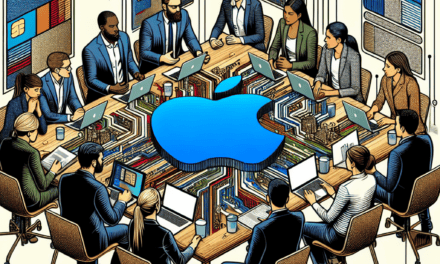“December Rate Cut Looms: Fed’s Move Sparks Economic Uncertainty”
Introduction
In a recent analysis, a prominent economist has forecasted a potential interest rate cut by the Federal Reserve in December, a move that could signal a shift in monetary policy amid evolving economic conditions. This prediction comes as the Fed grapples with balancing inflationary pressures and fostering economic growth. The anticipated rate cut is expected to provide relief to markets and borrowers, yet it also introduces a layer of uncertainty regarding the Fed’s future policy trajectory. As global economic dynamics continue to fluctuate, the implications of such a decision could reverberate through financial markets, influencing investment strategies and economic forecasts.
Impact Of A December Rate Cut On The Stock Market
As the year draws to a close, the financial world is abuzz with speculation following an economist’s prediction that the Federal Reserve may implement a rate cut in December. This potential move, while aimed at stimulating economic growth, carries significant implications for the stock market. Investors and analysts alike are keenly observing the situation, as the anticipated rate cut could usher in a period of both opportunity and uncertainty.
To begin with, a rate cut by the Federal Reserve typically lowers the cost of borrowing, which can encourage businesses to invest and expand. This, in turn, often leads to increased consumer spending, as individuals find it more affordable to finance large purchases. Consequently, such economic activity can boost corporate earnings, which is generally favorable for stock prices. Historically, lower interest rates have been associated with bullish stock markets, as investors seek higher returns in equities compared to the diminished yields from bonds and savings accounts.
However, while the initial reaction to a rate cut might be positive, the longer-term effects are less predictable. One of the primary concerns is that a rate cut could signal underlying weaknesses in the economy. If the Federal Reserve feels compelled to lower rates, it may indicate that economic growth is faltering or that inflation is not meeting targets. This perception can lead to increased volatility in the stock market, as investors reassess their risk exposure and adjust their portfolios accordingly.
Moreover, the anticipated rate cut introduces a layer of uncertainty regarding future monetary policy. While a single rate cut might be seen as a proactive measure to sustain economic momentum, it could also be the beginning of a series of cuts if economic conditions do not improve. This uncertainty can create a challenging environment for investors, who must navigate the potential for both short-term gains and long-term risks.
In addition to these considerations, the global economic landscape adds another dimension of complexity. International markets are interconnected, and a rate cut by the Federal Reserve can have ripple effects worldwide. For instance, a lower interest rate in the United States might lead to a depreciation of the dollar, affecting trade balances and potentially prompting other central banks to adjust their own monetary policies. Such global dynamics can further influence investor sentiment and stock market performance.
Furthermore, the impact of a rate cut on different sectors of the stock market can vary. Interest-sensitive sectors, such as real estate and utilities, may benefit from lower borrowing costs, while financial institutions might face pressure on their profit margins due to reduced interest income. Investors will need to carefully evaluate sector-specific factors and adjust their strategies to align with the evolving economic landscape.
In conclusion, while the prospect of a December rate cut by the Federal Reserve presents potential opportunities for the stock market, it also introduces a degree of uncertainty that cannot be overlooked. Investors must remain vigilant, considering both the immediate effects and the broader economic implications of such a policy shift. As the situation unfolds, market participants will need to balance optimism with caution, navigating the complexities of a financial environment that is both dynamic and unpredictable.
How A Fed Rate Cut Could Influence Consumer Spending
The recent prediction by a prominent economist that the Federal Reserve may implement a rate cut in December has sparked considerable interest and speculation regarding its potential impact on consumer spending. As the Federal Reserve’s monetary policy decisions are closely watched by financial markets and consumers alike, understanding the implications of a rate cut is crucial for anticipating economic trends. A reduction in interest rates typically aims to stimulate economic activity by making borrowing cheaper, thereby encouraging both businesses and consumers to spend more. However, the anticipated rate cut also introduces a degree of uncertainty, as its effects on consumer behavior can vary based on a multitude of factors.
To begin with, a rate cut generally lowers the cost of borrowing, which can lead to increased consumer spending. When interest rates decrease, loans for big-ticket items such as homes and automobiles become more affordable. This can incentivize consumers to make purchases they might have otherwise postponed. Additionally, lower interest rates can reduce monthly payments on existing variable-rate loans, such as credit cards and adjustable-rate mortgages, thereby increasing disposable income. With more money in their pockets, consumers may feel more confident in their financial situation, leading to a boost in spending on goods and services.
Moreover, the psychological impact of a rate cut should not be underestimated. When the Federal Reserve signals a willingness to support economic growth through monetary easing, it can enhance consumer confidence. This sense of optimism can translate into increased spending, as consumers are more likely to make discretionary purchases when they feel secure about their financial future. Furthermore, businesses may respond to a rate cut by expanding operations or investing in new projects, potentially leading to job creation and higher wages, which further fuels consumer spending.
However, the anticipated rate cut also brings with it a layer of uncertainty. While lower interest rates can stimulate spending, they can also lead to concerns about the broader economic outlook. For instance, consumers may question why the Federal Reserve feels the need to cut rates, speculating that it could be a response to underlying economic weaknesses. Such concerns might prompt more cautious spending behavior, as individuals choose to save rather than spend in anticipation of potential economic downturns.
Additionally, the effectiveness of a rate cut in boosting consumer spending can be influenced by external factors such as inflation and global economic conditions. If inflation is perceived to be rising, the real benefit of lower interest rates may be offset by higher prices, which could dampen consumer enthusiasm. Similarly, global economic uncertainties, such as trade tensions or geopolitical events, can overshadow domestic monetary policy actions, leading consumers to adopt a wait-and-see approach.
In conclusion, while a December rate cut by the Federal Reserve could potentially stimulate consumer spending by making borrowing more affordable and boosting confidence, it also introduces a level of uncertainty that could temper its effects. The interplay between monetary policy, consumer sentiment, and external economic factors will ultimately determine the extent to which a rate cut influences spending behavior. As such, both consumers and businesses will need to navigate this complex landscape with caution, balancing optimism with prudence as they make financial decisions in the months ahead.
The Role Of Interest Rates In Economic Recovery
In the intricate dance of economic recovery, interest rates play a pivotal role, acting as both a catalyst and a stabilizer. Recently, an economist’s prediction of a potential rate cut by the Federal Reserve in December has sparked discussions about the future trajectory of the U.S. economy. This anticipated move comes amid a backdrop of fluctuating economic indicators and global uncertainties, which have left policymakers grappling with the best course of action to sustain growth and stability.
Interest rates, set by central banks like the Federal Reserve, are a fundamental tool in managing economic activity. By adjusting these rates, the Fed can influence borrowing costs, consumer spending, and business investment. Lowering interest rates typically aims to stimulate economic activity by making borrowing cheaper, thereby encouraging spending and investment. Conversely, raising rates is often intended to curb inflation and prevent an overheating economy. The delicate balance of these adjustments is crucial in steering the economy towards a path of sustainable growth.
The prediction of a December rate cut suggests that the Federal Reserve may be responding to signs of economic slowdown or potential risks on the horizon. Recent data has shown mixed signals, with some sectors experiencing robust growth while others face headwinds. For instance, while consumer spending has remained relatively strong, manufacturing and exports have shown signs of weakness, partly due to global trade tensions and supply chain disruptions. In this context, a rate cut could serve as a preemptive measure to bolster economic resilience and maintain momentum.
However, the prospect of a rate cut is not without its challenges and uncertainties. One of the primary concerns is the potential impact on inflation. While current inflation levels have been relatively subdued, a significant reduction in interest rates could lead to an uptick in prices if demand outpaces supply. This scenario would require careful monitoring and potential recalibration of monetary policy to prevent inflation from eroding purchasing power and destabilizing the economy.
Moreover, the global economic landscape adds another layer of complexity to the decision-making process. With geopolitical tensions, trade disputes, and varying recovery rates across different regions, the interconnectedness of economies means that domestic policy decisions can have far-reaching implications. The Federal Reserve must therefore consider not only the domestic economic indicators but also the broader global context in which these decisions are made.
As the December meeting approaches, the Federal Reserve will likely weigh these factors carefully, balancing the need to support economic growth with the imperative to maintain price stability. The outcome of this meeting will be closely watched by markets, businesses, and consumers alike, as it will provide insights into the Fed’s assessment of the current economic climate and its strategy for navigating future uncertainties.
In conclusion, while the prediction of a December rate cut by the Federal Reserve highlights the central role of interest rates in economic recovery, it also underscores the inherent uncertainties that accompany such decisions. As policymakers strive to chart a course through these complexities, the interplay of domestic and global factors will continue to shape the economic landscape. Ultimately, the effectiveness of interest rate adjustments in fostering a robust and sustainable recovery will depend on the Fed’s ability to adapt to evolving conditions and respond to emerging challenges with agility and foresight.
Potential Risks Of A Premature Rate Cut By The Fed
In recent months, the financial world has been abuzz with speculation regarding the Federal Reserve’s next move on interest rates. An economist’s prediction of a potential rate cut in December has added fuel to the fire, sparking debates about the timing and implications of such a decision. While a rate cut might seem like a welcome relief to some, it is crucial to consider the potential risks associated with a premature adjustment in monetary policy.
To begin with, a rate cut is typically employed as a tool to stimulate economic growth by making borrowing cheaper, thereby encouraging spending and investment. However, if implemented prematurely, it could lead to unintended consequences. One of the primary concerns is the possibility of fueling inflation. With inflation already a topic of concern, a rate cut could exacerbate the situation by increasing demand without a corresponding increase in supply, leading to higher prices. This scenario could undermine the purchasing power of consumers and erode the real value of savings, ultimately destabilizing the economy.
Moreover, a premature rate cut could send mixed signals to the market. The Federal Reserve’s actions are closely watched by investors, and any indication of a rate cut might be interpreted as a sign of underlying economic weakness. This perception could lead to increased market volatility, as investors reassess their portfolios in light of potential economic instability. Consequently, the very act of cutting rates could undermine confidence in the economy, creating a self-fulfilling prophecy of economic downturn.
In addition to market perceptions, there is also the risk of diminishing the effectiveness of monetary policy tools. The Federal Reserve has a limited arsenal of measures to combat economic downturns, and interest rate cuts are among the most potent. By using this tool prematurely, the Fed risks depleting its options for future economic challenges. Should a more severe economic crisis arise, the central bank may find itself with limited capacity to respond effectively, having already exhausted its primary means of stimulus.
Furthermore, a premature rate cut could have international repercussions. The global economy is interconnected, and changes in U.S. monetary policy can have ripple effects worldwide. A rate cut could lead to a depreciation of the U.S. dollar, affecting trade balances and potentially leading to retaliatory measures by other countries. This could strain international relations and disrupt global trade, further complicating the economic landscape.
While the prospect of a December rate cut may seem appealing to some, it is essential to weigh these potential risks carefully. The Federal Reserve must consider the broader economic context and the long-term implications of its actions. A hasty decision could lead to unintended consequences that outweigh the short-term benefits of a rate cut.
In conclusion, while the prediction of a December rate cut by the Federal Reserve has generated significant interest, it is imperative to approach this possibility with caution. The potential risks of a premature rate cut, including inflationary pressures, market volatility, diminished policy effectiveness, and international repercussions, must be carefully evaluated. As the Fed navigates this complex economic landscape, it must balance the need for immediate economic support with the long-term stability of the financial system.
Historical Analysis Of Fed Rate Cuts And Economic Outcomes
The Federal Reserve’s decisions on interest rates have long been a focal point for economists, investors, and policymakers alike, as these decisions can significantly influence economic activity. Historically, rate cuts by the Federal Reserve have been employed as a tool to stimulate economic growth, particularly during periods of economic downturn or uncertainty. As we approach December, an economist’s prediction of a potential rate cut by the Fed has sparked discussions about the implications of such a move and the subsequent uncertainty that may follow.
To understand the potential impact of a December rate cut, it is essential to examine the historical context of previous rate cuts and their economic outcomes. Historically, the Federal Reserve has reduced interest rates in response to various economic challenges, such as recessions, financial crises, or periods of sluggish growth. For instance, during the 2008 financial crisis, the Fed aggressively cut rates to near zero in an effort to stabilize the financial system and encourage borrowing and investment. This move, coupled with other monetary and fiscal measures, played a crucial role in the eventual recovery of the U.S. economy.
Similarly, in the early 2000s, the Fed implemented a series of rate cuts to counteract the economic slowdown following the dot-com bubble burst. These cuts were instrumental in fostering a low-interest-rate environment that supported economic expansion. However, it is important to note that while rate cuts can provide short-term economic relief, they are not without potential drawbacks. Prolonged periods of low interest rates can lead to asset bubbles, increased risk-taking, and imbalances in the economy, as evidenced by the housing market bubble that preceded the 2008 crisis.
As we consider the current economic landscape, the prediction of a December rate cut by the Fed raises questions about the underlying motivations and potential consequences. The global economy is facing a myriad of challenges, including geopolitical tensions, supply chain disruptions, and inflationary pressures. In this context, a rate cut could be seen as a preemptive measure to bolster economic resilience and maintain consumer and business confidence. However, the decision to cut rates is not without its complexities, as it must be carefully balanced against the risk of exacerbating inflation or creating financial instability.
Moreover, the uncertainty that may follow a rate cut is a critical consideration. While a reduction in interest rates can provide immediate economic stimulus, it also introduces an element of unpredictability into the financial markets. Investors may react with caution, and businesses may delay investment decisions until there is greater clarity on the Fed’s long-term monetary policy trajectory. This uncertainty can, in turn, dampen the intended stimulative effects of the rate cut.
In conclusion, the historical analysis of Fed rate cuts and their economic outcomes provides valuable insights into the potential implications of a December rate cut. While such a move could offer short-term economic support, it also carries the risk of unintended consequences and heightened uncertainty. As the Federal Reserve navigates this complex economic environment, its decisions will undoubtedly be closely scrutinized by economists and market participants alike, as they seek to understand the broader implications for the U.S. and global economies.
Investor Strategies In Response To Fed Rate Uncertainty
As the financial world keenly observes the Federal Reserve’s next moves, a prominent economist has predicted a potential rate cut in December, sparking a wave of strategic recalibrations among investors. This anticipated shift in monetary policy comes amid a backdrop of economic indicators that suggest a cooling economy, with inflationary pressures showing signs of easing and employment growth stabilizing. Consequently, investors are now tasked with navigating an environment characterized by both opportunity and uncertainty, as they seek to optimize their portfolios in response to the evolving interest rate landscape.
In light of the predicted rate cut, investors are considering a range of strategies to capitalize on the potential benefits while mitigating associated risks. One approach gaining traction is the reallocation of assets towards equities, particularly those in sectors that historically perform well in lower interest rate environments. For instance, technology and consumer discretionary stocks often benefit from reduced borrowing costs, which can enhance corporate profitability and, in turn, drive stock prices higher. Additionally, lower rates can stimulate consumer spending, further bolstering these sectors.
However, the prospect of a rate cut also introduces a degree of uncertainty, as the long-term trajectory of monetary policy remains unclear. Investors must therefore remain vigilant, continuously assessing economic data and Fed communications to anticipate future policy shifts. This uncertainty necessitates a diversified investment strategy, with a balanced mix of asset classes to hedge against potential volatility. Fixed-income securities, for example, may still hold appeal, particularly those with shorter durations that are less sensitive to interest rate fluctuations.
Moreover, the global economic context cannot be overlooked, as international developments may influence the Fed’s decision-making process and, by extension, investor strategies. Trade tensions, geopolitical events, and economic performance in key markets such as China and the European Union all have the potential to impact U.S. monetary policy. Investors, therefore, need to adopt a global perspective, considering how these factors might affect their domestic investments and seeking opportunities in international markets that may offer attractive returns.
In addition to asset allocation adjustments, investors are also exploring alternative investment vehicles that can provide diversification and potential hedges against interest rate uncertainty. Real estate investment trusts (REITs), for instance, can offer income generation and capital appreciation potential, particularly in a low-rate environment where traditional fixed-income yields may be less attractive. Similarly, commodities and precious metals, such as gold, are often viewed as safe-haven assets that can provide stability during periods of economic uncertainty.
As December approaches, the financial community will be closely monitoring the Fed’s actions and statements for any indications of future policy direction. While a rate cut may provide short-term relief and opportunities, the broader economic implications and subsequent policy decisions remain uncertain. Investors must therefore remain agile, ready to adjust their strategies as new information emerges and market conditions evolve.
In conclusion, the predicted December rate cut by the Federal Reserve presents both opportunities and challenges for investors. By adopting a proactive and diversified approach, considering both domestic and international factors, and remaining attuned to economic signals, investors can position themselves to navigate the complexities of an uncertain interest rate environment. As always, careful analysis and strategic foresight will be essential in achieving long-term investment success amidst the shifting monetary landscape.
Global Economic Implications Of A U.S. Rate Cut
The prospect of a December rate cut by the Federal Reserve has captured the attention of economists and financial markets worldwide, as it could have significant implications for the global economy. The Federal Reserve’s monetary policy decisions are closely watched because they influence not only the U.S. economy but also have ripple effects across international markets. A rate cut, which would lower the cost of borrowing, is typically employed to stimulate economic activity by encouraging spending and investment. However, the potential for such a move in December is accompanied by a degree of uncertainty, as the global economic landscape remains complex and unpredictable.
To begin with, a rate cut by the Federal Reserve could lead to a depreciation of the U.S. dollar. This depreciation would make American goods and services more competitive abroad, potentially boosting U.S. exports. Consequently, countries that rely heavily on exporting to the United States might experience increased demand for their products, which could stimulate their own economic growth. However, this scenario is contingent upon various factors, including the state of global trade relations and the economic health of U.S. trading partners.
Moreover, a lower interest rate environment in the United States could prompt investors to seek higher returns in emerging markets. This capital inflow could provide a much-needed boost to these economies, which have been grappling with challenges such as high inflation and political instability. Nevertheless, the influx of foreign capital can also lead to volatility in these markets, as sudden shifts in investor sentiment could result in rapid capital outflows, destabilizing local economies.
In addition to these potential benefits, there are also concerns about the long-term implications of a rate cut. Critics argue that lowering interest rates when the economy is not in a recession could limit the Federal Reserve’s ability to respond to future economic downturns. With interest rates already at historically low levels, the central bank has less room to maneuver in the event of a severe economic crisis. This limitation could necessitate the use of unconventional monetary policy tools, such as quantitative easing, which have their own set of risks and uncertainties.
Furthermore, the global economic environment is currently characterized by a number of uncertainties, including geopolitical tensions, trade disputes, and the ongoing impact of the COVID-19 pandemic. These factors could influence the effectiveness of a U.S. rate cut in stimulating global economic growth. For instance, if trade tensions between major economies escalate, the benefits of a rate cut could be offset by reduced international trade and investment.
In conclusion, while a December rate cut by the Federal Reserve could provide a short-term boost to the global economy, it is accompanied by a significant degree of uncertainty. The potential benefits, such as increased U.S. exports and capital inflows to emerging markets, must be weighed against the risks of limited monetary policy flexibility and the unpredictable nature of the current global economic environment. As such, policymakers and investors alike will need to carefully monitor developments and remain adaptable to changing circumstances in order to navigate the complexities of the global economy in the months ahead.
Q&A
1. **What is the main prediction made by the economist?**
The economist predicts that the Federal Reserve will implement a rate cut in December.
2. **What is the reason behind the predicted rate cut?**
The rate cut is anticipated due to signs of economic slowdown and the need to stimulate growth.
3. **What are the potential impacts of the rate cut on the economy?**
A rate cut could lower borrowing costs, encourage spending and investment, and potentially boost economic activity.
4. **What uncertainties follow the predicted rate cut?**
Uncertainties include how effective the rate cut will be in stimulating the economy and the potential for inflationary pressures.
5. **How might the financial markets react to the rate cut?**
Financial markets might react positively with increased stock prices, but there could also be volatility due to uncertainty about future economic conditions.
6. **What are the risks associated with the rate cut?**
Risks include the possibility of insufficient impact on economic growth and the potential for creating asset bubbles.
7. **What other factors could influence the Fed’s decision-making process?**
Other factors include global economic conditions, labor market data, and inflation trends.
Conclusion
The prediction of a December rate cut by the Federal Reserve, as suggested by an economist, indicates a potential shift in monetary policy aimed at stimulating economic growth or addressing financial conditions. However, this anticipated move is accompanied by uncertainty, reflecting the complex interplay of economic indicators, geopolitical factors, and market reactions that could influence the Fed’s future decisions. The uncertainty underscores the challenges in forecasting economic trends and the need for adaptive strategies to navigate potential volatility in financial markets.





